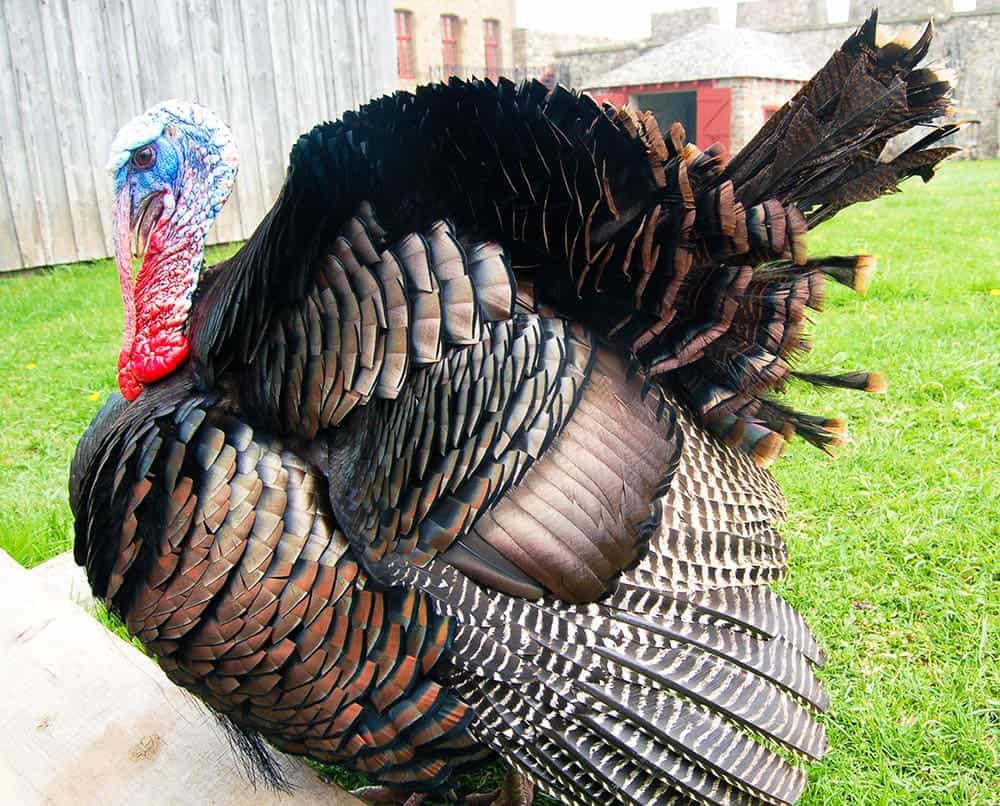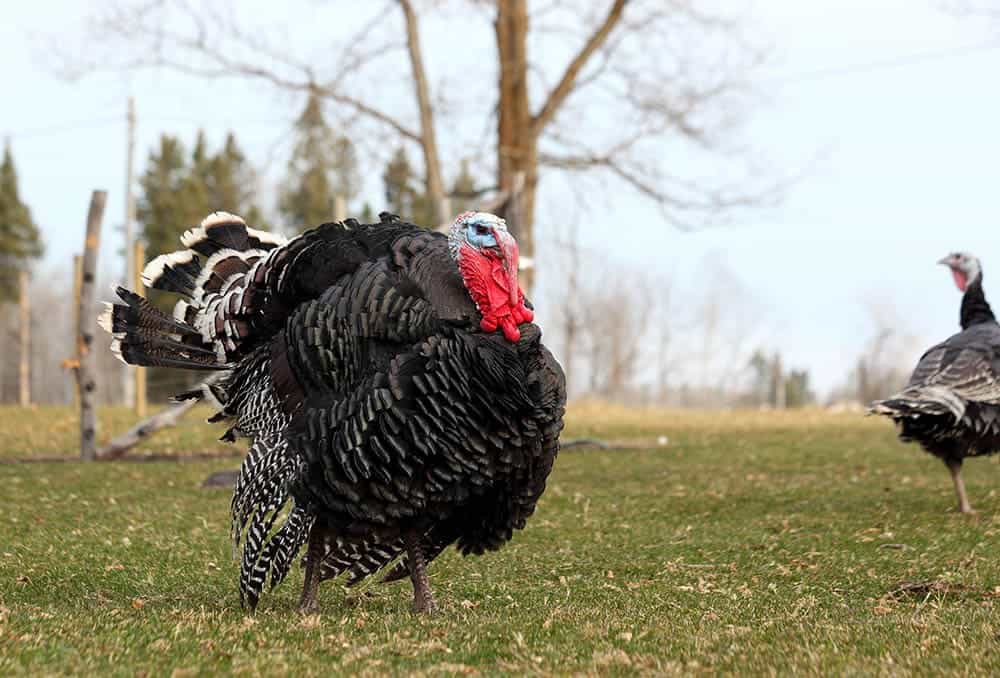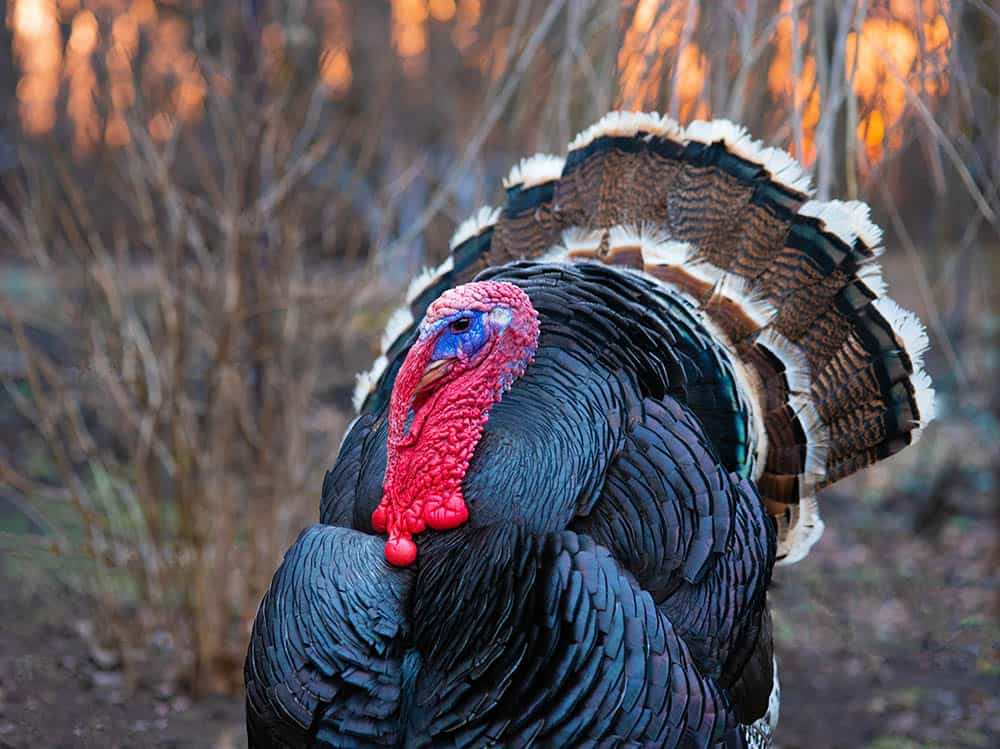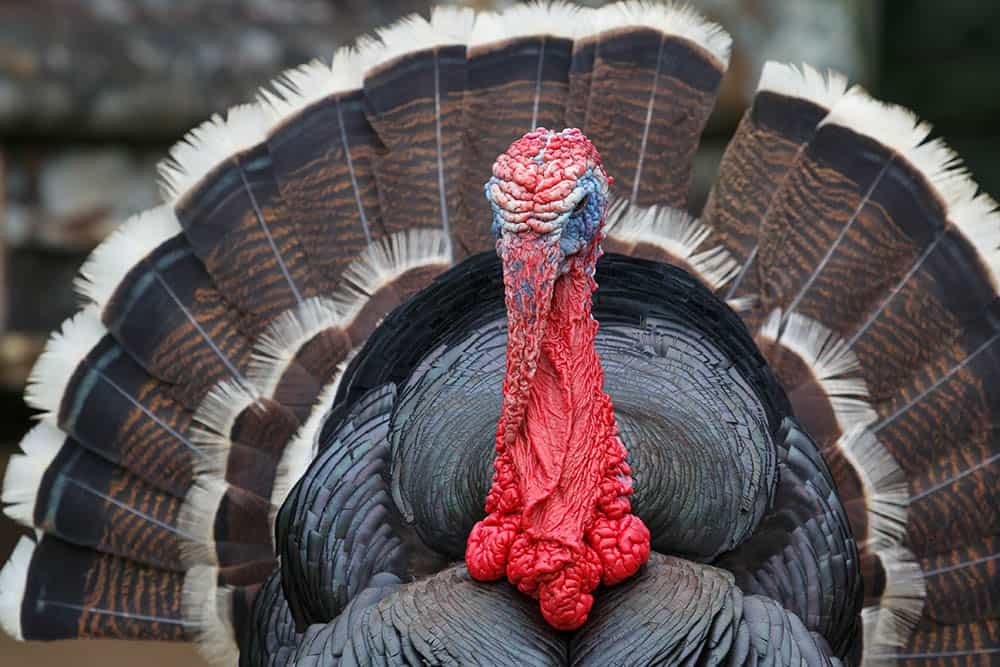Once the most popular domesticated breed, the Bronze Turkey fell out of favor somewhat in the mid to late 20th Century, and it is now classified as being critical.
It gets its name from the bronze finish to its plumage, and it is prized for its meat production, and although it is not as popular as the Broad Breasted White Turkey, many consumers look specifically for this breed for Thanksgiving and Christmas dinners.
Read on for more information on the breed and to determine whether it is a good fit for your farming operation.
Click to Skip Ahead:

Quick Facts about Bronze Turkeys
| Breed Name: | Bronze Turkey |
| Place of Origin: | England |
| Uses: | Meat |
| Stag (Male) Size: | 35-38 lbs |
| Hen (Female) Size: | 18-22 lbs |
| Color: | Brown, copper, blue, green, bronze |
| Lifespan: | 3-7 years |
| Climate Tolerance: | 70°F–80°F |
| Care Level: | Moderate |
| Production: | Meat |
Bronze Turkey Origins
It is believed that the Bronze Turkey originates from a cross between wild US turkeys and those brought over in the 18th century by settlers from England. The cross was developed to produce a bird that was bigger than the English turkeys but easier to manage than wild ones.
The name Bronze started in the 1830s, initially with the Point Judith Bronze from Rhode Island, but eventually spread to all birds of this type. The Bronze was officially recognized as a breed in 1874. Although in the 20th century, the breed split to become the Broad Breasted Bronze and the Standard Bronze, the two are still typically referred to simply as the Bronze.

Bronze Turkey Characteristics
The Bronze Turkey can grow to 4 feet tall and have a 6-foot wingspan. The Standard Bronze Turkey is considered a heritage breed and these, in turn, are very well domesticated. They can be friendly with humans and may even follow keepers around, like a pet dog. With that said, the species can be protective of its young, and overall temperament is often governed by the breeder and the amount of socialization the birds have undergone when young.
The Bronze Turkey is too large and heavy to be able to fly and struggles to jump. It can run quickly, however, and does require plenty of space to roam around. It is a robust and generally healthy breed that does not usually suffer too many illnesses.
As part of the Slow Food USA Ark Of Taste, the Standard Bronze Turkey is considered a heritage food that is in danger of going extinct. This means that the meat can be difficult to get hold of for consumers, but it also means that farmers can get a good price for good-quality Bronze Turkey meat.
Uses
The primary use of this breed is the same as with any breed of turkey: meat.
The Standard is considered a heritage breed and it is known for having gamey meat that can be considered strong.
The Broad Breasted grows larger and offers more meat, especially breast meat. However, it is more expensive to breed, and its meat has a milder flavor.
Milder turkey meat tends to be more popular but fetches a lower price than gamey, heritage meat. There is demand for both types of meat, especially around holiday seasons like Thanksgiving, Christmas, and Easter.

Appearance & Varieties
There are officially two varieties of Bronze Turkey:
- Standard – This variant is closer to the original Bronze and while it has been bred to improve certain characteristics, it is not as large as the Broad Breasted. It can reproduce naturally, and it yields stronger, gamier meat. The farmer does have to wait longer until the turkey is ready for butchering, but on a good feeding plan, a Standard Bronze can usually be butchered within 7 or 8 months.
- Broad Breasted – The Broad Breasted Bronze has been specifically crossed and bred to have a larger breast, more weight, and to yield more meat. It is ready for butchering in as little as 5 months, but its meat is considered milder and sells for less. This breed is also unable to reproduce naturally, which means that it must be artificially inseminated if you intend to breed it to maintain flock size.
Population/Distribution/Habitat
The exact numbers of the Bronze Turkey are unknown, but it is believed that the Broad Breasted variant is only bred in five or six hatchers across the US, while the Traditional Bronze is kept by hobbyists and backyard farmers. In 1987, there were only 300 breeding hens known to be in circulation.

Are Bronze Turkeys Good for Small-Scale Farming?
Several factors make the Bronze Turkey a good choice for small-scale farming:
- Calm Temperament – Handlers state that the Bronze is easier and calmer to keep than the popular White Turkey.
- Unable To Fly – The Bronze is incapable of flight, which means that it is easier to keep because there is less worry of them escaping.
- Choice Of Meat – The Standard Bronze produces gamey meat, while the Broad Breasted Bronze is milder and available in greater quantity. The smallscale farmer can choose their preferred style of meat.
But there are some downsides to breeding this turkey:
- Unable To Reproduce Naturally – The Standard is capable of natural reproduction, but the same is not true of the Broad Breasted, which must undergo artificial insemination to breed.
- Dark Feathers – One of the reasons that the White has become the breed of choice for farmers is because the pin feathers are harder to spot after cleaning, compared to the obvious dark feathers of the Bronze.
- Lots Of Room Required – Both varieties benefit from having room to roam, which means that you do need to have a decent size location for your turkey flock.

The Bronze Turkey
The Bronze Turkey was once the most popular of all domesticated turkey breeds in the US, having been bred to be easier to manage than wild turkeys but bigger than the English turkeys brought over with settlers. Today, it is considered a somewhat rare breed, but the Standard has gamey meat that is still considered a delicacy and can fetch a decent price at market.
Featured Image Credit: Lev Levin, Shutterstock
